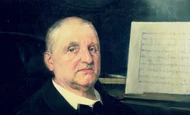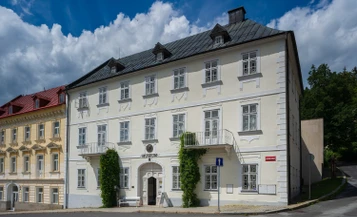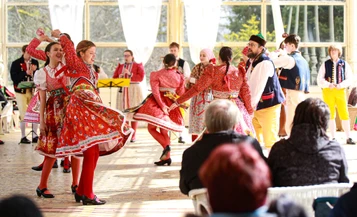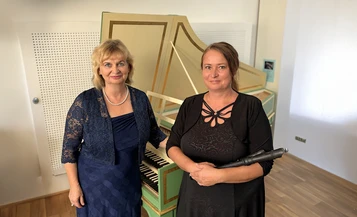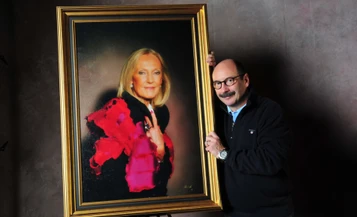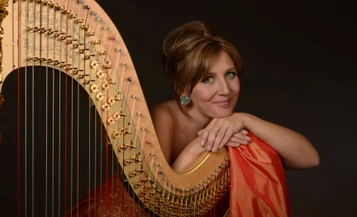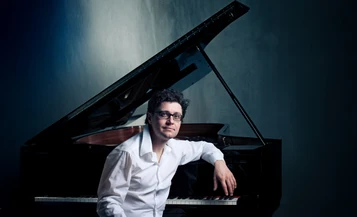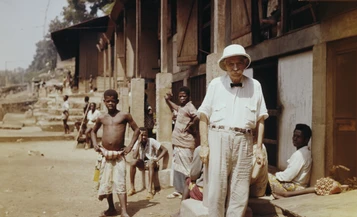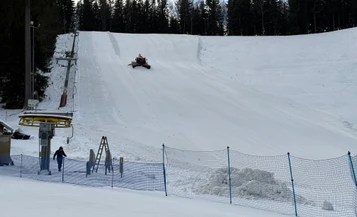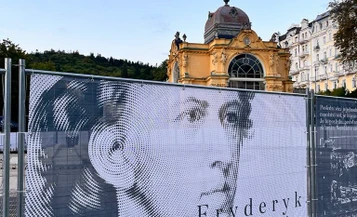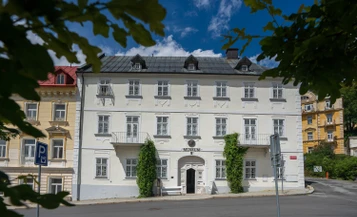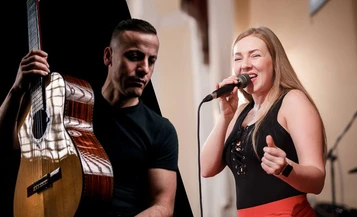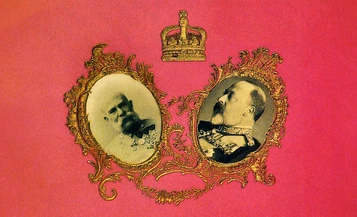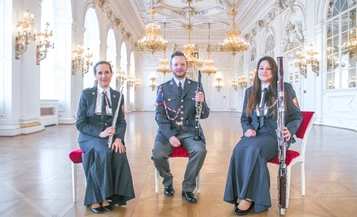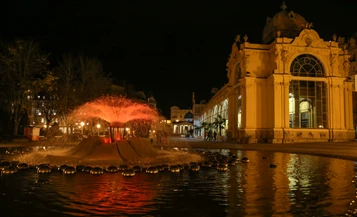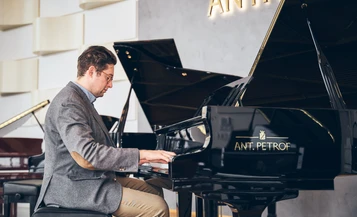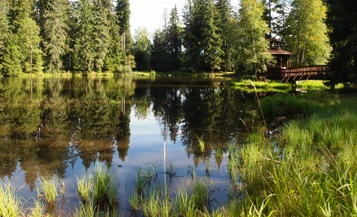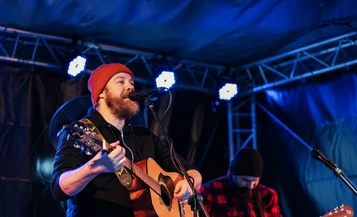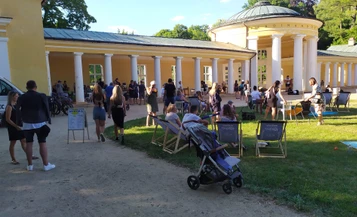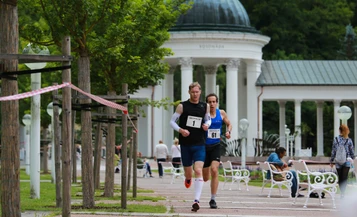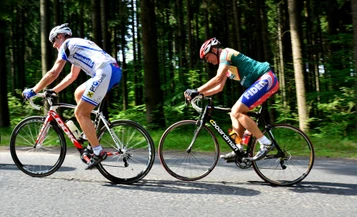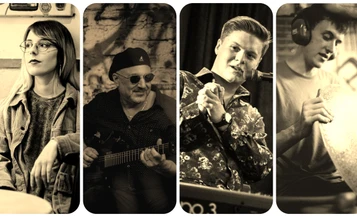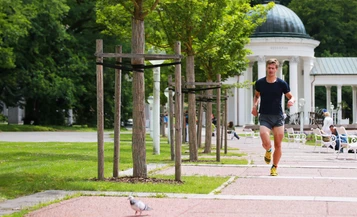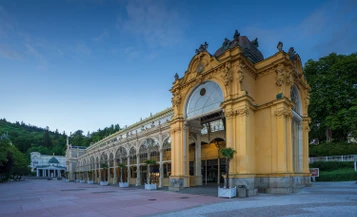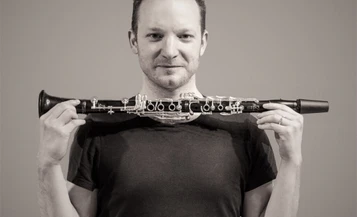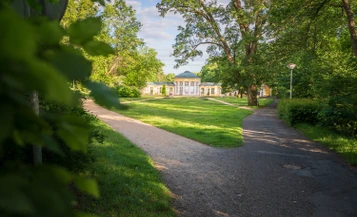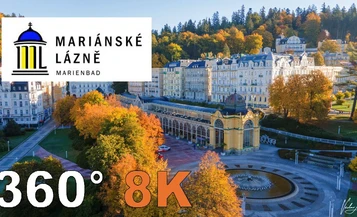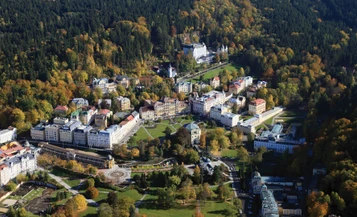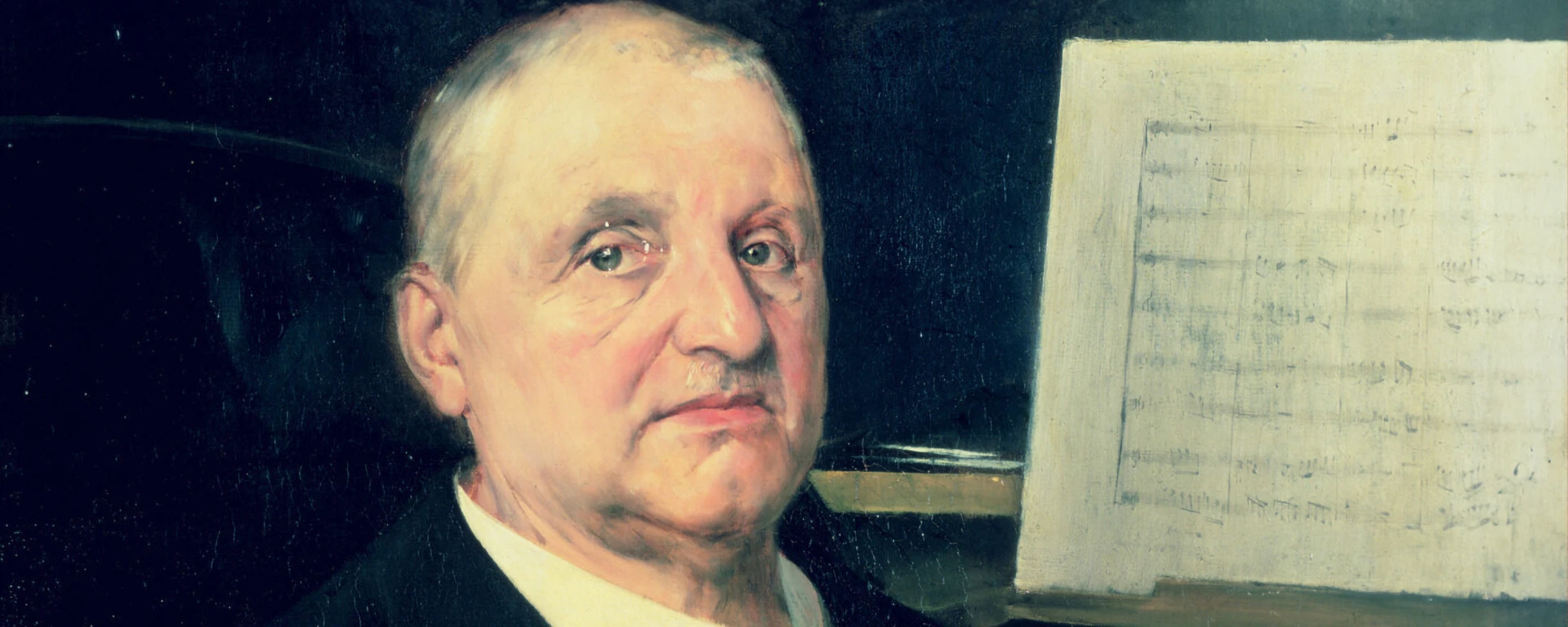
This year the cultural world commemorates the 200th anniversary of the death of the great Viennese composer and organist Anton Bruckner. This rare composer was one of the famous guests of Mariánské Lázně.
He was born on 4 September 1824 as the son of a small farmer in Ansfelden, Upper Austria, near Linz. He was educated from a young age by his father, learning to play the violin and organ. When he was about twelve years old, he began to compose. In 1856 he became organist at the Linz Cathedral, but it was not until he was 41 that he composed his First Symphony in C minor. It was performed on 9 May 1868 in Linz and was received with embarrassment. Disappointed, Bruckner moved to Vienna in 1868, where he was appointed professor at the conservatory. Here he was anxious, on the one hand the court Kapellmeister Herbeck stood firmly by his side, on the other the music critic Eduard Hanslik, a supporter of Brahms but a great enemy of Richard Wagner, was scheming against him. Hanslik knew how much Bruckner admired Wagner, and thus Bruckner also found himself in the enmity of this powerful critic. This made Bruckner's compositions all the more tenacious and careful. His reputation for extraordinary organ and compositional skill grew slowly but steadily. His nine symphonies are among the highlights of world music, especially his Fourth, the Romantic; then the Seventh, the Heroic, with its harrowing Adagio and mournful lament for the death of Richard Wagner (+ 1883); and no less so the Eighth, the Tragic, and the Ninth Symphonies, whose Adagio forms the conclusion of the composer's work. Bruckner's Third Mass in F minor is surpassed only by the music of Bach. When in 1884 the organist A. Nikisch performed Bruckner's Seventh Symphony at the Leipzig Gewandhaus, there was great enthusiasm among the audience. Suddenly Bruckner became famous and received many awards and honours. In November 1891 he was awarded an honorary doctorate from the University of Vienna. The rector, Adolf Exner, ended his speech with the words: "I, Rector Magnificus, bow deeply before the former Windhag tutor!"
Marianske Lazne 1873
Bruckner's visit to Mariánské Lázně in 1873 was not revisited by historians until later as a particularly glorious event for Mariánské Lázně. He was listed in the courlists with his arrival on 6 August 1873: "Herr Anton Bruckner, k.k.Hoforganist und Professor aus Wien". He stayed in the inn No. 54, called Weisses Rössl (after 1945 the famous Black Horse Inn). His memorial plaque was later unveiled here. Although the aim of his spa stay was to regain his health, he remained full of music and brought with him the work-in-progress score of the Third Symphony in D minor. He had already completed a sketch of the first movement on 23 February 1873 and by 16 July had worked it into a score. In the meantime, he had finished the Adagio (24 May 1873), while he had already orchestrated the Scherzo in Vienna in March. In a quiet room in Mariánské Lázně he continued to work with great diligence on the Third Symphony. He composed the finale on 31 August and finished the symphony here at the Černý kůň Inn. From there he then went to Wagner in Bayreuth at the beginning of September to dedicate his Third to him. This magnificent piece of music is still referred to in his works as "The Wagnerian Symphony of Mariánské Lázně". This term is probably the most apt, for here he completed the first version of this symphony and it was during his tireless work that he decided to dedicate the symphony to Richard Wagner. Although he worked very intensively in the Black Horse, he found enough time to play the organ in the Dean's Catholic Church. On the day of the birthday of Emperor Franz Joseph I, he played an amazingly fantastic improvisation on the imperial anthem on the organ at the end of the festive mass in the church. The Mariánské Lázně valley inspired the composer to feverish creative activity, to new poetic and musical ideas. Bruckner's activity in Mariánské Lázně did not concentrate only on the first version of the Third Symphony. Already during this work new ideas were coming to him and he began to sketch his Fourth Symphony. And the master found further wonderful inspirations for this great and most popular Romantic Symphony right here, in the forests of Mariánské Lázně, and brought them back to Vienna. To commemorate his visit, a marble memorial plaque with the German text was unveiled on the house where he lived, which survived the revolutionary year of 1945 and remained on the house until its demolition in 1956-57. "In diesem Hause wohnte der Tondichter Dr. Anton Bruckner im August des Jahres 1873."
A short history of the demolished house Weißes Rössl aka The Black Horse
The house in Postal Street where Anton BRUCKNER stayed existed from 1819 to 1956. In German it was called WEISSES RÖSSL (White Horse), after 1945 it was given the Czech name ČERNÝ KŮŇ (Black Horse). There used to be an inn and a blacksmith's shop of the Schicker family. The Black Horse House (No. 54) was built in 1819 by the blacksmith Matthias Schicker, who was its owner until 1832. Then his son Georg Schicker and his wife Franziska took over the house. In 1860-65, only Frantiska Schicker was the owner, from 1865 their son Johann Schicker and his wife Anna Regina. The house remained in the hands of the Schicker blacksmiths until 1898. At that time several parties lived in the house with the inn and the blacksmith's shop. In 1898 the property was transferred to Johann Jr. and Rosa Schicker. They sold the house to the Teplá Monastery on 20 June 1901, probably due to financial difficulties. The Teplá monastery rented the old and in need of repair Weißes Rössl inn to one Anton Niemöckel, who did well, as he soon bought the Emma house (no. 263) in Schön, which is listed as a hotel with year-round operation. After the First War, the inn was run by Mrs. Nagelschmidt. On the corner of the Black Horse there used to be a shop with mixed goods, it had signs "Delikatessen, Mehlprodukte, Papier, Kaffe Hag and was rented by Friedrich Benisch with Arthur and Elfrieda Benisch. They were still here in 1945. The choir director Vendelin Knauschner with his wife Maria and son - forest adjutant Otto Knauschner lived in the house as a tenant, musician Alois Helmer and his family lived here... On 16 June 1921 the house was confiscated by the Czechoslovak Socialist Republic during the land reform as the property of the grand owner of the Teplá monastery. But the property dispute between the Teplá Monastery and the state was fought throughout the entire Republic without any resolution. In 1945, the house was given a Czech name, but strangely enough not "Bílý", but Černý kůň. How did this happen? The painter of the advertisements was given the task of creating a large advertising board with a chess knight, but because no one told him what colour, he chose the black knight by mistake. The name caught on and, as stated, even went on to cover the entire area under the Black Knight Hotel. The Black Horse Inn was one of the cheapest pubs in the city and was in dire need of redevelopment actually from the early 20th century. The toilets were outside in the yard, the building was damp, the yard was always full of mud and eventually the decision was made to demolish it. This occurred in the winter of 1956-1957. A large modern city cinema was to be built in its place. However, the plan was not realised. Today, next to the beautifully landscaped house No. 55, the Golden Castle Youth Home remains an empty space, overgrown with trees and bushes.
Více o historii Mariánských Lázní na
